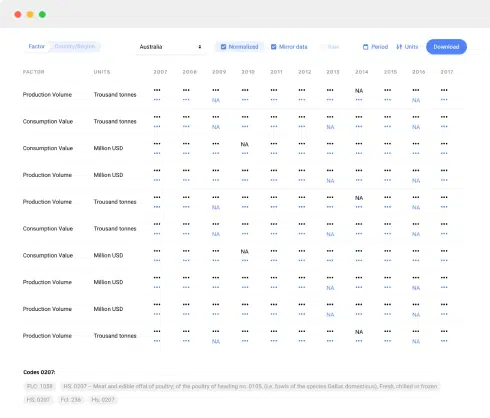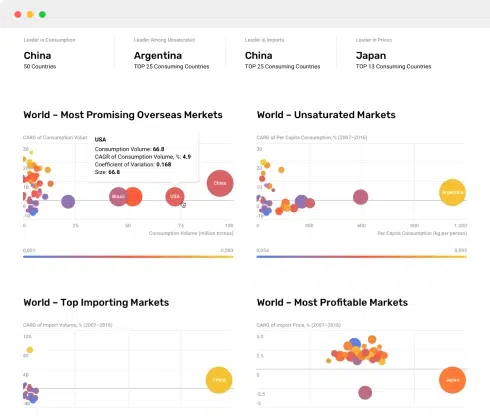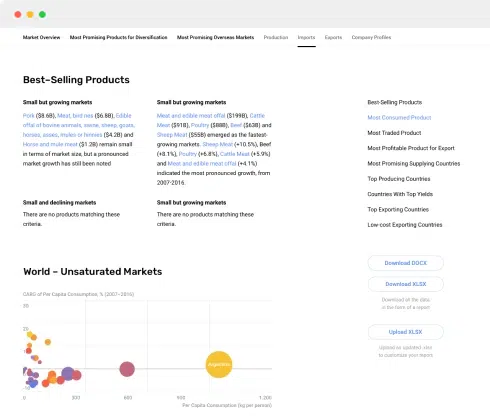
Monitor Brands: Dell Dominates High-Rating, High-Volume Quadrant; Samsung Commands Premium Sales
Key Findings
The analysis of the monitor market on Amazon (ZIP 60007) reveals a highly competitive landscape with distinct brand strategies and consumer response patterns. Key insights are summarized below.
- Dell is the sole brand achieving both high customer ratings (4.43) and high review volume, indicating strong market trust and satisfaction.
- Samsung demonstrates a successful premium strategy, achieving the highest sales volume (715 units) at an above-median average price ($386.65).
- The market is highly concentrated, with the top 4 brands (Sceptre, Samsung, Dell, ASUS) controlling over 70% of the sales volume.
- Significant price dispersion exists, with a long tail of offerings above $500, suggesting niche premium segments and potential grey market activity.
- Brands like Lenovo and AOC occupy a valuable "High Rating / Low Reviews" niche, representing an opportunity for amplified marketing to convert quality into volume.
Methodology
Data Source and Aggregation The findings in this report are derived from an analysis of publicly available e-commerce data on the Amazon marketplace in the United States, with ZIP code 60007 as the delivery location. The data is collected by product categories using the search keyword "Monitors". For a dynamic and interactive view of this brand landscape, explore the Brands section on IndexBox.
Rating vs Reviews
Quadrant Analysis and Strategic Positioning The scatter plot segments brands into four strategic groups based on their median rating and review count. Dell stands alone in the "Star" quadrant, combining high social proof with superior perceived quality. The "Rising" quadrant, containing ASUS, Samsung, Radeon, and Eyoyo, shows high engagement but room for quality improvement to boost ratings. Brands like Lenovo, HP, and AOC are "Niche" players with excellent ratings but lower awareness, indicating untapped growth potential. SideTrak falls into the "Problematic" segment, requiring fundamental product and marketing reassessment.
Marketing and Quality Recommendations For "Star" brands like Dell, the focus should be on leveraging social proof through loyalty programs and user-generated content. "Rising" brands must prioritize addressing the root causes of negative feedback to convert volume into advocacy. "Niche" players should invest in targeted digital marketing and influencer partnerships to amplify their strong reputation. "Problematic" brands need a complete product reevaluation and aggressive promotional tactics to generate initial reviews and exit the quadrant.
Price vs Sales Volume
Evaluating Pricing Strategies and Elasticity The analysis reveals clear strategic clusters: Samsung, ASUS, and AOC successfully operate in the "High Price / High Volume" space, justifying premium pricing with strong demand. Dell and Lenovo excel in the "Low Price / High Volume" quadrant, likely competing on value and capturing mass-market share. Brands like Alienware and JSAUX in the "High Price / Low Volume" quadrant represent specialized, low-elasticity niches, while several brands in the "Low Price / Low Volume" quadrant struggle with visibility or value proposition.
Levers for Portfolio and Pricing Optimization High-volume premium brands should explore limited-time promotions to defend market share without eroding brand value. Value leaders must guard against assortment cannibalization by clearly differentiating product tiers. Niche premium brands should focus on margin protection and targeted marketing rather than volume growth. All players should use A/B testing to find the optimal number of SKUs, as an excessive offer count (e.g., Radeon's 39) does not automatically translate to sales leadership.
Price Distribution
Identifying Market Sweet Spots and Anomalies The price distribution is heavily right-skewed, with the vast majority of offerings concentrated below $400, indicating a highly price-sensitive mass market. The Kernel Density Estimate (KDE) shows a primary peak well below the $279 median, suggesting a fierce battle in the budget segment. The long tail of listings extending beyond $600 represents specialized premium or gaming monitors, but the near-zero density suggests very limited volume and potential market inefficiencies or grey imports.
Strategic Assortment and Pricing Recommendations Brands should focus assortment development in the high-density <$300 range to compete for volume, but must differentiate on features to avoid pure price competition. The gap between ~$400 and $600 presents an opportunity for a "premium-value" tier that is currently underserved. Listings in the extreme high-price tail (>$1000) should be scrutinized for authenticity; marketplace enforcement is needed to mitigate brand damage from counterfeit risks. We recommend testing price increases of 5-7% in the $250-$350 range to probe elasticity without significant volume loss.
Market Share
Leadership Dynamics and Portfolio Strategy The market is oligopolistic, with the top three brands—Sceptre (34.7k units), Samsung (21.5k units), and Dell (15.7k units)—commanding a dominant combined share. Sceptre's volume leadership, despite a mid-tier rating, suggests a winning value-oriented mass-market strategy. The "Others" category, while small, is a breeding ground for disruption; its top-5 hidden players likely include emerging brands like KOORUI and ARZOPA, which are gaining traction with aggressive pricing.
Strategic Moves for Market Players Incumbent leaders should defend their positions through portfolio diversification, using flanker brands to attack both premium and budget segments without diluting the master brand. Challenger brands must avoid direct competition with leaders and instead identify underserved niches, such as specific features or design aesthetics. All players should analyze the estimated marketing spend per unit sold for top brands to identify efficient customer acquisition channels and benchmark their own performance.
Boxplot
Analyzing Price Dispersion and Competitive Overlap The boxplot reveals significant price variability within brands, with ASUS and Samsung showing the widest ranges, indicating broad assortments covering multiple segments. Substantial overlap in the interquartile ranges of Dell, AOC, ASUS, and Samsung suggests intense competition and a high risk of price wars in the core $150-$350 market. Outliers, such as ASUS and Samsung monitors priced above $1,500, represent specialized premium lines but are statistical anomalies in terms of volume.
Recommendations for Assortment and Range Optimization Brands with wide ranges (e.g., ASUS) should rationalize SKUs to reduce internal cannibalization and clarify their market positioning. To avoid destructive competition, brands should differentiate through bundling (e.g., included accessories), enhanced warranties, or exclusive features rather than engaging in parallel price cuts. The presence of high-end outliers is justified for brand halo effects but should be a limited part of the assortment, with the core focus remaining on the competitive mid-range.
Custom Search Request
On-Demand Competitive Intelligence The static analysis above provides a snapshot; true strategic advantage comes from continuous monitoring. IndexBox's "Custom Search Request" panel allows for on-demand parsing to track real-time shifts. A marketing director can automate this process via API to receive daily alerts on competitor promotions, new product launches, or sudden price changes for specific monitor models. This functionality enables seamless integration into existing Business Intelligence (BI) dashboards, transforming raw data into an actionable competitive early-warning system.
Conclusion
Synthesis and Strategic Imperatives The monitor market is bifurcated into a high-volume, price-competitive mass market and a low-volume, feature-focused premium segment. Leadership requires excelling in one of these domains or carving out a defensible niche. For investors, the high concentration suggests mature brands with stable cash flows are lower-risk bets, while the "Others" category offers high-risk, high-reward potential in disruptive entrants. Barriers to entry are significant, hinging on achieving economies of scale, establishing brand trust, and navigating complex logistics, which are influenced by regional factors like shipping to ZIP 60007. Continuous monitoring through platforms like IndexBox is not an option but a necessity for maintaining competitive parity and identifying the next market shift.
| Strategy | Key Brands | Core Focus | Risks |
|---|---|---|---|
| Low-Cost Leadership | Sceptre, CRUA | Maximizing volume through aggressive pricing | Low margins, high sensitivity to input cost changes |
| Premium Differentiation | Samsung, Alienware | Justifying high prices with superior features/brand | Limited target market, requires constant innovation |
| Value Niche (Quality Focus) | Dell, Lenovo, AOC | Balancing reliable quality with competitive pricing | Caught in a squeeze between low-cost and premium players |
1. INTRODUCTION
Making Data-Driven Decisions to Grow Your Business
- REPORT DESCRIPTION
- RESEARCH METHODOLOGY AND THE AI PLATFORM
- DATA-DRIVEN DECISIONS FOR YOUR BUSINESS
- GLOSSARY AND SPECIFIC TERMS
2. EXECUTIVE SUMMARY
A Quick Overview of Market Performance
- KEY FINDINGS
- MARKET TRENDSThis Chapter is Available Only for the Professional EditionPRO
3. MARKET OVERVIEW
Understanding the Current State of The Market and its Prospects
- MARKET SIZE: HISTORICAL DATA (2012–2024) AND FORECAST (2025–2035)
- MARKET STRUCTURE: HISTORICAL DATA (2012–2024) AND FORECAST (2025–2035)
- TRADE BALANCE: HISTORICAL DATA (2012–2024) AND FORECAST (2025–2035)
- PER CAPITA CONSUMPTION: HISTORICAL DATA (2012–2024) AND FORECAST (2025–2035)
- MARKET FORECAST TO 2035
4. MOST PROMISING PRODUCTS FOR DIVERSIFICATION
Finding New Products to Diversify Your Business
- TOP PRODUCTS TO DIVERSIFY YOUR BUSINESS
- BEST-SELLING PRODUCTS
- MOST CONSUMED PRODUCTS
- MOST TRADED PRODUCTS
- MOST PROFITABLE PRODUCTS FOR EXPORTS
5. MOST PROMISING SUPPLYING COUNTRIES
Choosing the Best Countries to Establish Your Sustainable Supply Chain
- TOP COUNTRIES TO SOURCE YOUR PRODUCT
- TOP PRODUCING COUNTRIES
- TOP EXPORTING COUNTRIES
- LOW-COST EXPORTING COUNTRIES
6. MOST PROMISING OVERSEAS MARKETS
Choosing the Best Countries to Boost Your Export
- TOP OVERSEAS MARKETS FOR EXPORTING YOUR PRODUCT
- TOP CONSUMING MARKETS
- UNSATURATED MARKETS
- TOP IMPORTING MARKETS
- MOST PROFITABLE MARKETS
7. PRODUCTION
The Latest Trends and Insights into The Industry
- PRODUCTION VOLUME AND VALUE: HISTORICAL DATA (2012–2024) AND FORECAST (2025–2035)
8. IMPORTS
The Largest Import Supplying Countries
- IMPORTS: HISTORICAL DATA (2012–2024) AND FORECAST (2025–2035)
- IMPORTS BY COUNTRY: HISTORICAL DATA (2012–2024)
- IMPORT PRICES BY COUNTRY: HISTORICAL DATA (2012–2024)
9. EXPORTS
The Largest Destinations for Exports
- EXPORTS: HISTORICAL DATA (2012–2024) AND FORECAST (2025–2035)
- EXPORTS BY COUNTRY: HISTORICAL DATA (2012–2024)
- EXPORT PRICES BY COUNTRY: HISTORICAL DATA (2012–2024)
10. PROFILES OF MAJOR PRODUCERS
The Largest Producers on The Market and Their Profiles
LIST OF TABLES
- Key Findings In 2024
- Market Volume, In Physical Terms: Historical Data (2012–2024) and Forecast (2025–2035)
- Market Value: Historical Data (2012–2024) and Forecast (2025–2035)
- Per Capita Consumption: Historical Data (2012–2024) and Forecast (2025–2035)
- Imports, In Physical Terms, By Country, 2012–2024
- Imports, In Value Terms, By Country, 2012–2024
- Import Prices, By Country, 2012–2024
- Exports, In Physical Terms, By Country, 2012–2024
- Exports, In Value Terms, By Country, 2012–2024
- Export Prices, By Country, 2012–2024
LIST OF FIGURES
- Market Volume, In Physical Terms: Historical Data (2012–2024) and Forecast (2025–2035)
- Market Value: Historical Data (2012–2024) and Forecast (2025–2035)
- Market Structure – Domestic Supply vs. Imports, in Physical Terms: Historical Data (2012–2024) and Forecast (2025–2035)
- Market Structure – Domestic Supply vs. Imports, in Value Terms: Historical Data (2012–2024) and Forecast (2025–2035)
- Trade Balance, In Physical Terms: Historical Data (2012–2024) and Forecast (2025–2035)
- Trade Balance, In Value Terms: Historical Data (2012–2024) and Forecast (2025–2035)
- Per Capita Consumption: Historical Data (2012–2024) and Forecast (2025–2035)
- Market Volume Forecast to 2035
- Market Value Forecast to 2035
- Market Size and Growth, By Product
- Average Per Capita Consumption, By Product
- Exports and Growth, By Product
- Export Prices and Growth, By Product
- Production Volume and Growth
- Exports and Growth
- Export Prices and Growth
- Market Size and Growth
- Per Capita Consumption
- Imports and Growth
- Import Prices
- Production, In Physical Terms: Historical Data (2012–2024) and Forecast (2025–2035)
- Production, In Value Terms: Historical Data (2012–2024) and Forecast (2025–2035)
- Imports, In Physical Terms: Historical Data (2012–2024) and Forecast (2025–2035)
- Imports, In Value Terms: Historical Data (2012–2024) and Forecast (2025–2035)
- Imports, In Physical Terms, By Country, 2024
- Imports, In Physical Terms, By Country, 2012–2024
- Imports, In Value Terms, By Country, 2012–2024
- Import Prices, By Country, 2012–2024
- Exports, In Physical Terms: Historical Data (2012–2024) and Forecast (2025–2035)
- Exports, In Value Terms: Historical Data (2012–2024) and Forecast (2025–2035)
- Exports, In Physical Terms, By Country, 2024
- Exports, In Physical Terms, By Country, 2012–2024
- Exports, In Value Terms, By Country, 2012–2024
- Export Prices, By Country, 2012–2024


